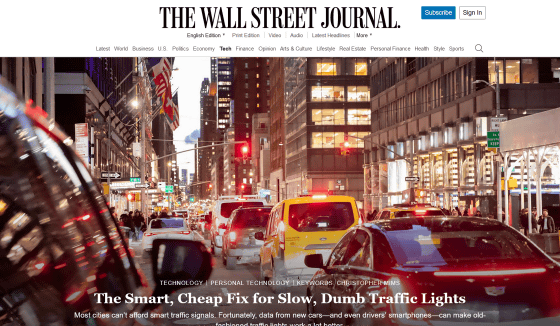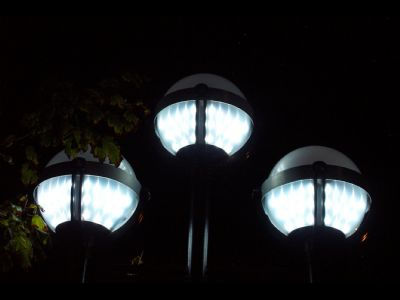Google's 'Green Light' project to reduce waiting times at red lights can reduce stop-and-go intersections by 30% while keeping costs down

Google is working on a project called '
Stuck at a Red Light? Google Says Its Green Light Will Help Traffic Flow - WSJ
https://www.wsj.com/tech/personal-tech/google-green-light-traffic-light-optimization-992e4252

Some people may have been caught in red lights many times while driving in the city and thought, 'Why do I have to waste time waiting for a red light in this modern age where technology is so advanced?' According to a survey conducted by traffic analysis company Inrix in 2021, Americans spend about 10% of their time traveling short distances waiting for a traffic light. It has also been pointed out that idling cars while waiting for a traffic light causes intersections to emit 29 times more greenhouse gases than other public roads.
To solve these problems, a team at Google Research, Google's technology research division, is working on a project called 'Green Light' to optimize the timing of traffic lights to reduce waiting times at red lights. Green Light uses an AI model to process data from Google Maps installed on drivers' smartphones and optimize the timing of the switch.
Green Light has already been introduced in 14 cities around the world, including Abu Dhabi in the United Arab Emirates, Hamburg in Germany, Seattle in the United States, and Kolkata in India. It has been reported that these cities have reduced frequent stopping and starting ( stop-and-go ) of vehicles at intersections by as much as 30%.

One of the major advantages of Green Light is that it reduces the cost and time normally required to change the timing of traffic lights. Generally, to find the optimal timing for traffic lights, local governments conduct surveys to count the number of cars passing through intersections throughout the day. In the United States, such surveys cost about $5,000 each, so most traffic lights are updated only once every five years, and some remain the same for decades.
In addition to fixed traffic lights that switch their lighting timing according to a specific pattern, there are also 'dynamic traffic lights' that detect the number of cars present based on data from cameras and sensors installed on the road surface and switch their lighting timing accordingly. Ideally, all traffic lights would be connected to a central control system, and dynamic traffic lights would be optimized for every moment across the city, but the installation of such traffic lights would cost tens of thousands of dollars (several million yen), and some estimates suggest that a full modernization of the entire intersection would cost $250,000 (approximately 39 million yen).
There are also additional maintenance costs associated with these complex systems, which can add up to an additional $5,000 a year to operate, forcing cash-strapped local governments to stick to fixed traffic lights.
Green Light's system is based on Google Maps installed on users' smartphones and does not require any additional cameras or sensors. The optimized timing of traffic lights is displayed on an online dashboard, so municipalities can simply adjust the timing accordingly.
Another benefit is that municipalities can measure how traffic patterns change after following Green Light's advice to change the timing of traffic lights. In fact, in Seattle, where Green Light was introduced at five intersections in June 2022, after analyzing whether traffic patterns improved, one intersection was reverted and the remaining four intersections maintained the changes. City planners believe they can save money by continuing to use Green Light in parallel with traditional methods.

Green Light is expanding rapidly, with new cities expected to be announced in 2024. Professor Henry Liu , a traffic engineering researcher at the University of Michigan, also argues that because Google has made Green Light's methodology public, other technology startups and transportation agencies can develop similar systems if they can get the right kind of data from the car itself or the navigation app. 'Instead of putting cameras at intersections, if we know the path the vehicle is moving, the vehicle itself becomes a traffic sensor,' Liu said.
Related Posts:







